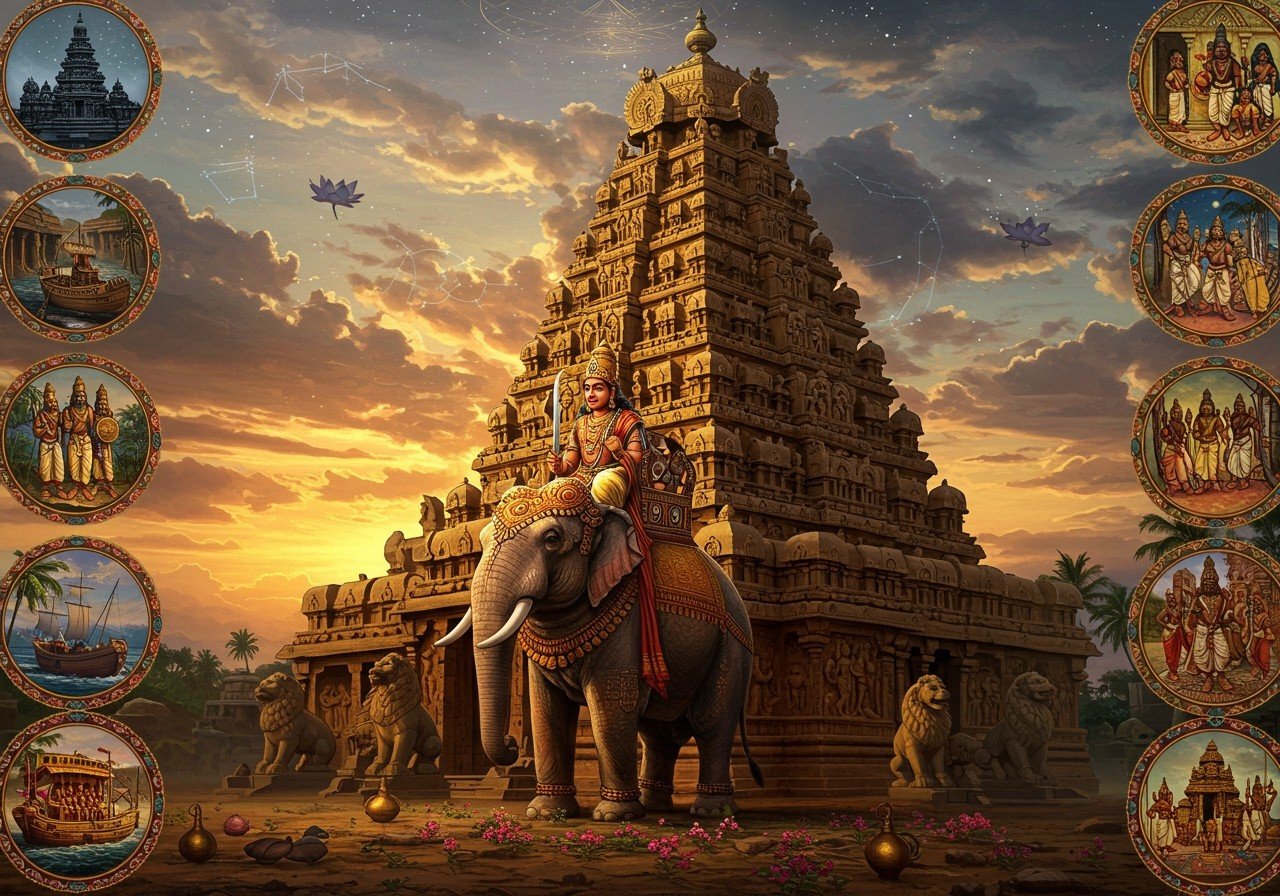
The Pallava Dynasty, a prominent South Indian power, significantly shaped the region’s history and culture from 275 CE to 897 CE. Emerging from the Deccan, where they served under the Satavahanas, they established their capital in Kanchipuram, present-day Tamil Nadu. Their influence peaked during Mahendravarman I’s reign (571-630 CE), extending across a vast territory from northern Andhra Pradesh to the Kaveri River in the south. The Pallavas’ origins remain a subject of scholarly debate, with theories ranging from Parthian ancestry to indigenous South Indian roots.
Early History and Rise of the Pallava Dynasty
The name “Pallava,” meaning “branch” in Sanskrit, possibly alludes to their emergence as a distinct power. Early rulers like Simhavarman I solidified the dynasty’s foundations, establishing control over regions encompassing modern Tamil Nadu and parts of Andhra Pradesh. Kanchipuram served as their capital, while Mamallapuram became a significant port city. The Pallavas navigated a complex socio-political landscape, interacting with neighboring kingdoms such as the Cholas, Cheras, and Pandyas. Their sophisticated administration and military prowess were key to their success.
- Key Territories: Kanchipuram (capital), Mamallapuram, strategically important for political and economic control.
- Early Interactions: Navigating alliances and conflicts with the Cholas, Cheras, and Pandyas shaped their geopolitical strategy.
The Pallava Ascendancy
Strategic military campaigns and astute governance propelled the Pallavas to prominence. Rulers like Simhavarman II and Mahendravarman I spearheaded territorial expansion. A centralized administrative system provided stability, while flourishing trade with Southeast Asia fueled economic growth. The Pallavas were also patrons of art and religion, supporting both Hinduism and Buddhism, which led to the construction of magnificent temples.
- Centralized Government: A strong administrative framework enabled efficient governance and resource management, supporting their expansionist ambitions.
- Economic Growth: Trade with Southeast Asia brought wealth and resources, further strengthening the dynasty’s power and influence.
The Golden Age of the Pallavas
The reigns of Narasimhavarman I and Narasimhavarman II marked the pinnacle of Pallava power and cultural achievement. This era witnessed the creation of iconic structures like the Shore Temple and the breathtaking rock-cut temples of Mahabalipuram. Pallava patronage also nurtured literary achievements, enriching Tamil literature with notable works by poets and scholars. Trade with Southeast Asia continued to flourish, enhancing the dynasty’s economic and cultural exchange.
- Iconic Structures: The Shore Temple and Mahabalipuram rock-cut temples exemplify the architectural brilliance of the Pallava period, attracting visitors and scholars even today.
- Literary Achievements: The flourishing of literature under Pallava patronage contributed significantly to the development of Tamil language and literary traditions.
The Decline and Fall of the Pallava Dynasty
Internal strife and succession disputes weakened the Pallava kingdom, creating vulnerabilities exploited by external forces. Invasions by the Chalukyas and Rashtrakutas posed significant threats. Economic challenges further strained the administration, hindering effective governance. The later Pallava rulers struggled to maintain the dynasty’s former glory, eventually succumbing to the rising Chola Empire.
- External Invasions: Pressure from the Chalukyas and Rashtrakutas significantly weakened the Pallavas, contributing to their decline.
- Economic Challenges: Economic difficulties hampered the administration’s ability to maintain stability and defend against external threats.
The Enduring Legacy of the Pallavas
Despite their decline, the Pallava legacy remains deeply etched in South Indian history and culture. Their distinctive architectural style, characterized by intricate carvings and majestic granite structures, influenced subsequent dynasties. The Pallavas’ contributions to art, architecture, music, dance, and literature continue to inspire and resonate. Preservation efforts ensure that their magnificent monuments endure, allowing future generations to appreciate the richness of their cultural heritage.
Explore related articles:
- Kandariya Mahadeva Temple: Religious Importance and History
- Badami Cave Temples: Chalukya Dynasty Architecture
Enhance your spiritual journey with authentic puja items from Poojn.in:
FAQs on the Pallava Dynasty
What defines the Pallava Dynasty? The Pallava Dynasty was a significant power in South India, ruling from the 3rd to the 9th century CE. They are renowned for their contributions to art, architecture, and culture, particularly their rock-cut temples and sculptures in Mahabalipuram.
How did the Pallava Dynasty come to an end? The Pallava Dynasty gradually declined due to conflicts with the Chola Dynasty, who eventually conquered their territories in the 9th century CE.
When did the Pallava Dynasty’s decline begin? The decline of the Pallava Dynasty commenced in the late 8th century CE, accelerating into the 9th century due to ongoing wars with the Cholas.
What are the key achievements of the Pallava Dynasty? The Pallavas are celebrated for their architectural marvels, including the rock-cut temples and sculptures of Mahabalipuram. They also played a vital role in promoting Tamil language and culture.
Who were some prominent Pallava rulers? Notable Pallava rulers include Mahendravarman I, Narasimhavarman I (Mamalla), and Narasimhavarman II (Rajasimha).
Where was the Pallava capital located? The Pallava Dynasty’s capital was Kanchipuram, a renowned center of learning and culture during their reign.
What factors led to the rise of the Pallava Dynasty? The Pallavas ascended to power after defeating the Kalabhras in the 3rd century CE. Their strategic location and robust military capabilities facilitated their expansion.
How did the Pallavas influence Indian culture? The Pallava Dynasty significantly influenced Indian culture through their architectural innovations, patronage of the arts, and the promotion of Tamil literature and traditions. Their rock-cut temples at Mahabalipuram are recognized as UNESCO World Heritage sites.


